Running with Chisels Vol. 15
Marquetry tips
Browse by Category:
Welcome
Our corner of the internet dedicated to decorated furniture
#saynotonakedfurniture
#dressyourfurniture
rwc archive
tools
classes
Vol 15 | August 31, 2024
Thank you, gentle readers. There are now over 400 of you. It is a pleasure to talk marquetry with you. As ever, I am happy to write about any topic that you’d like. Just ask!
Late class announcements: there are a couple of openings in the Geometric Marquetry class on Sept 21-22 and a spot at the Fredricksburg Workshop on Oct 5-6. Otherwise, my classes are full through the rest of the year, for which I am grateful. Thank you. I will post new classes for the first half of 2025 in the next newsletter.
I hope that your summer has been delightful. I am in final assembly stages for the Art Nouveau dining room table and chairs, which is a great relief. I’ll have pictures for the next issue as well.
In the meantime, I have some things to talk about. There were no obvious reader questions to use, so there is no “Ask Dave” this month. I am including a portion of an article that I’m writing, and some thoughts on France.
In this edition of Running with Chisels:
- Tech(nique) Topic: Inlaying Curved Veneer Elements into a Table Top
- Decorative Arts Museums worth a visit: Paris
Tech(nique) Topic: How did I inlay the curved elements into the Art Nouveau table top that I am making?
This is an excerpt from an article that I am writing for the American Period Furniture Journal, published annually by SAPFM.
Ah the art nouveau table top: We have visited it several times recently, most notably in RWC 11 (Foreshadowing) and RWC 12 (How I messed it up, and how I fixed it). Last month in the introduction to RWC 14, I casually mentioned I had started over, and that I had used a slow but steady method to inlay the marquetry elements one at a time, to pamper the bubinga grain. Here is that method:
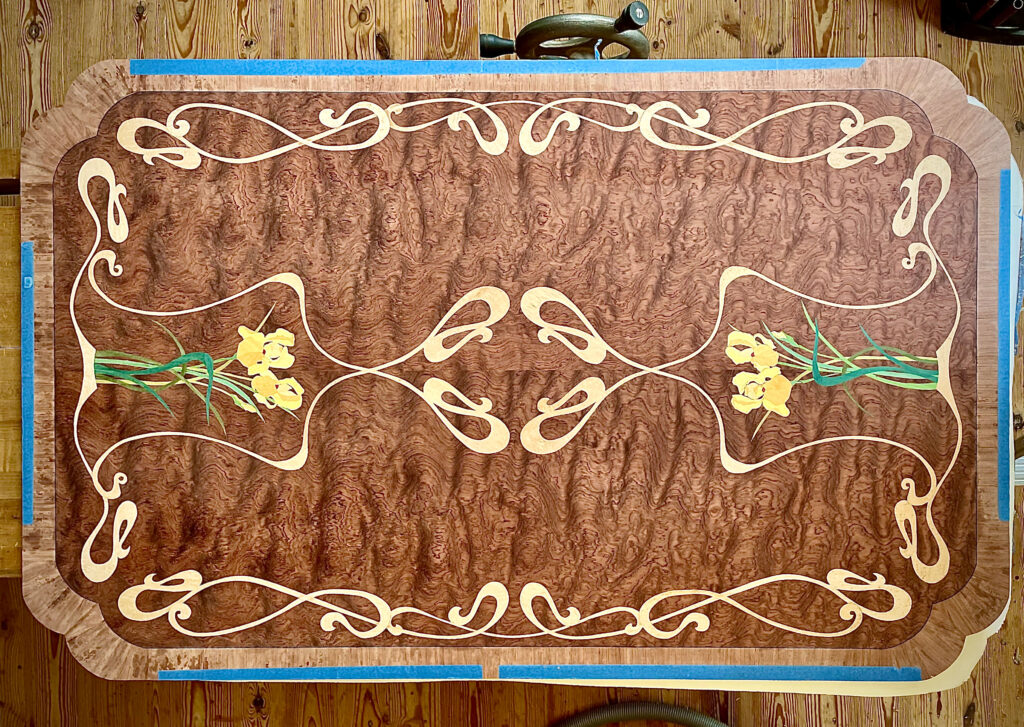
There are five different shapes total that combine to form the design, and I cut each of the five as templates out of plywood. I used these plywood patterns to cut each flourish out of birds eye maple veneer:

- After covering the sheet of veneer with a layer of blue tape, I clamped the plywood pattern to the maple.
- Using a fine-tip X-Acto knife for tight curves and my trusty Olfa cutter (1/2” box cutter) for the longer smooth curves, I cut out the veneer shape. The Olfa cutter is usually able to cut through the veneer in two passes, however with the fine-tip X-Acto I sometimes cannot get enough pressure to cut through the veneer in 3 passes. I limit myself to three passes with the template in place because more than that will result in a “hairy” line, with splintered veneer.
- After removing the template, I can peel off the blue tape and easily see the outline pattern in any spots along the tight curves where the veneer has not been fully cut through – these I can now finish cutting with the X-Acto.
Once a veneer inlay was cut out I placed it on the table surface and aligned it. ** It is important to use the veneer piece and not the template – though the two pieces should be close to identical, the veneer piece is the one that will be used to inlay and using the actual veneer will minimize gaps in the finished piece.**
- In the approximate location of each flourish, I again laid down a layer of blue tape on the bubinga.
- I held the inlay in place by taping all along one edge of the maple, leaving the other edge exposed. That gave me a clear view of the other edge, which I then traced the pattern with the same knives that I had used to cut the inlay out. Before removing the edge tape one the one side to ensure my maple piece did not move, I taped down the open edge, then exposed the opposite side to complete the transfer process.
- Once I had traced the whole pattern onto the table top, I removed the maple which is going to be the insert, and peeled the blue tape off of the inlay pattern. I then continued to cut in the lines on the table veneer until I felt that I had cut all the way through.

At that point I used my Dremel router with a 1/8 inch router bit in it to remove the center of the inlay area.
I then used a hand router with a 1/16 inch straight cutter to carefully remove the remaining veneer from the tabletop. I also used knives and carving gouges as necessary to get a clean edge. I used the carving gouges to define the tight curves so they were smooth.

After trimming all the bubinga veneer to the edge of the tape line, I did a test fit of the maple into the groove. Generally, it would fit in most places and it would bind in a few spots. Where the inlay did not fit perfectly, I used my X-Acto knife to lightly trace the edge of the maple overlap onto the bubinga. I then used a knife or carving gouge to remove the very small piece of the tabletop.
Once I was comfortable that the inlay was going to fit, I applied Old Brown Glue to the entire hole, placed the inlay into the groove, and drove it in with a plastic hammer. I placed a piece of closed cell foam over the inlay and then I clamped a 3/8 inch thick piece of acrylic on top of it and left it to dry. The foam (or rubber) distributes the clamping pressure against the inlay so that even if the hole is slightly deep, there is still pressure applied to hold it in place. I have some 6 inch throat clamps that were helpful for being able to reach the extend of the inlay from the tabletop edge.
I then repeated this process with each curved element, one at a time, to reach the completed tabletop stage.
Marquetry Museums worth a visit: Paris
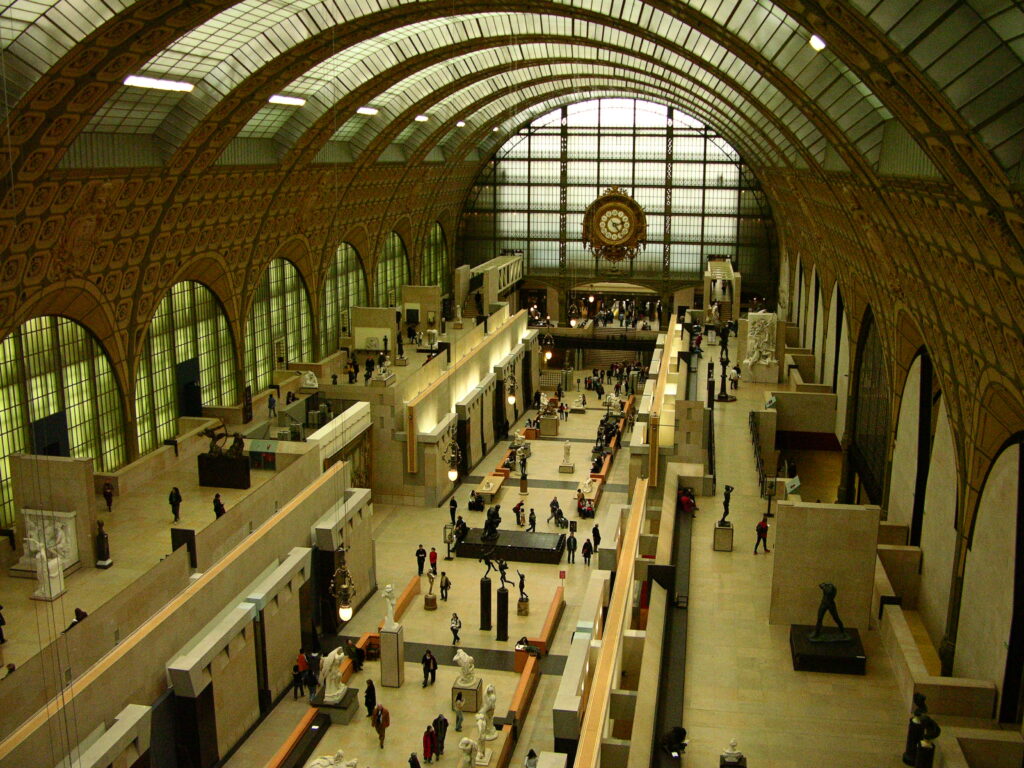
We were in southern France recently, and I was looking forward to telling you about the Decorative Arts Museum in Lyon. It was closed for renovations though, so I will report on it when we go back.
Of all of the cities that I have been to, Paris has both the most and the best marquetry. It was a center for marquetry in the 17th and 18th century, and those skills continue to be passed along in the schools and the shops around the city. There are four superb collections that jump to mind:



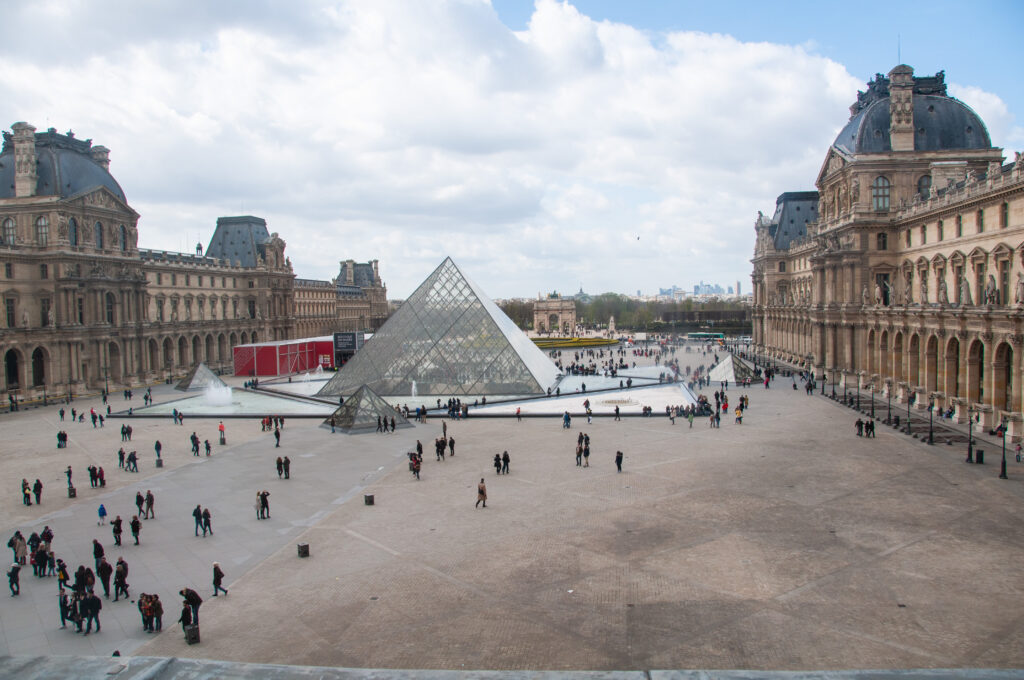
The Louvre has a whole wing of 18th century furniture in room displays. It can be tricky to get good pictures due to reflections, but there is a lot of amazing stuff. Having a longer zoom lens is helpful for capturing details, and a polarizer would also be handy. The Boulle cabinets are in a large room so it is possible to get closer to them.
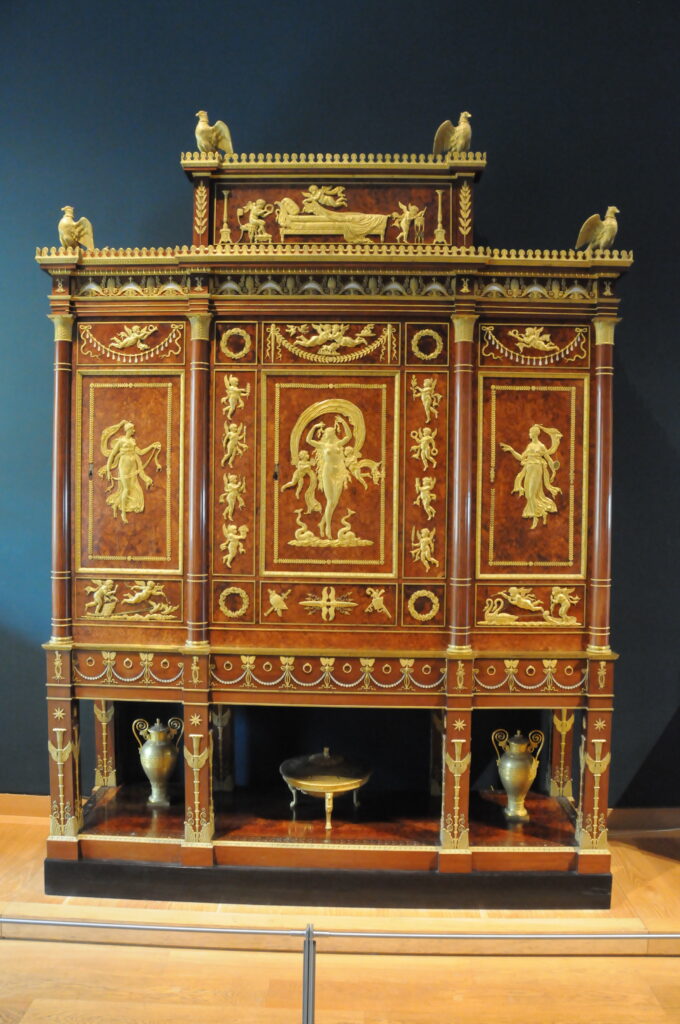
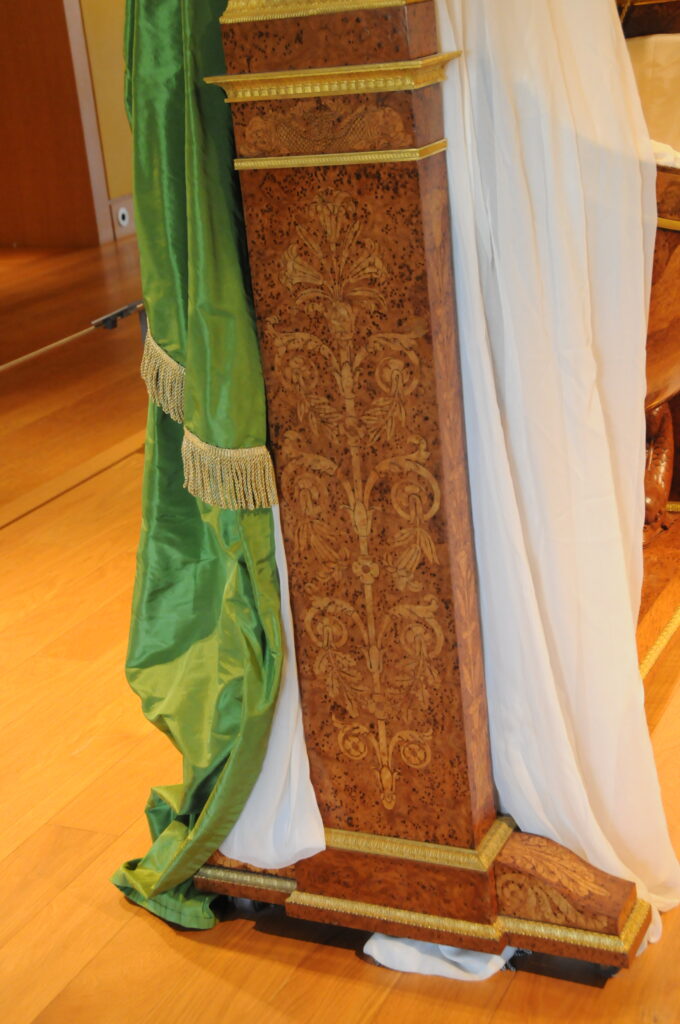
There is also a Napolean III (1850-1870) area with stunning work. There may have been fewer craftsmen at this time than in the 18th century but the workmanship was still top shelf. Art Deco also doesn’t seem as much of a step out in design or execution once you’ve seen the Napolean III era designs.
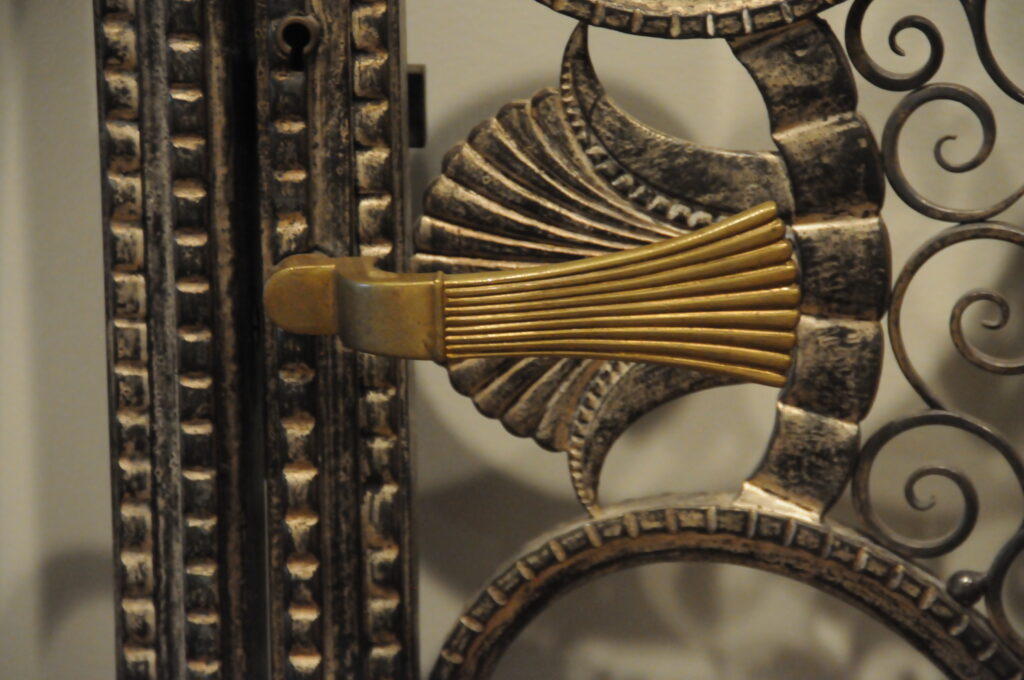
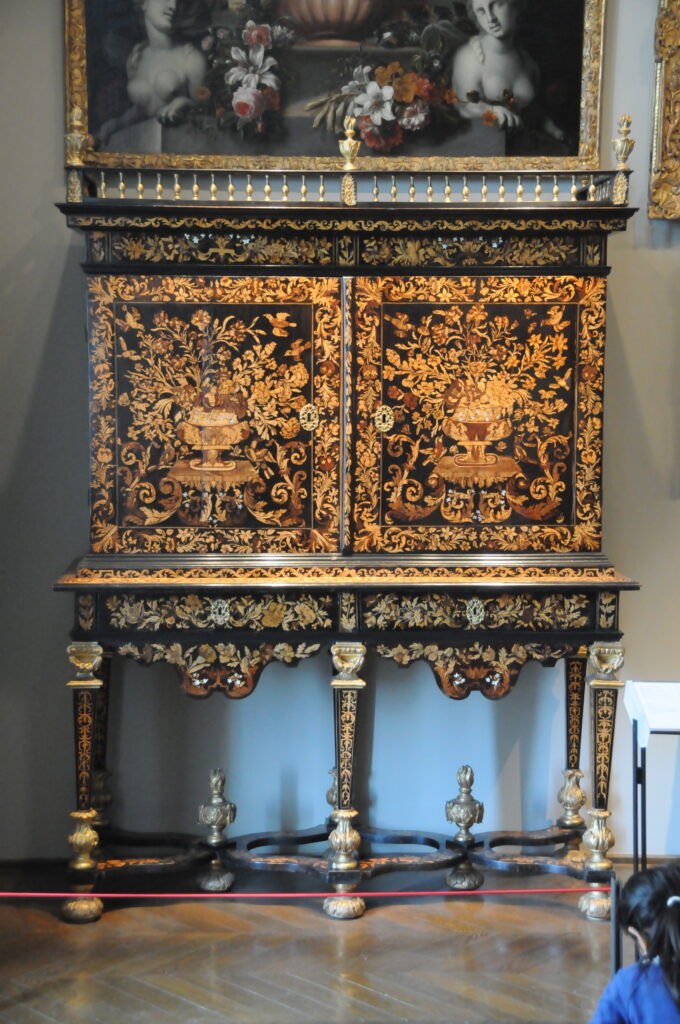
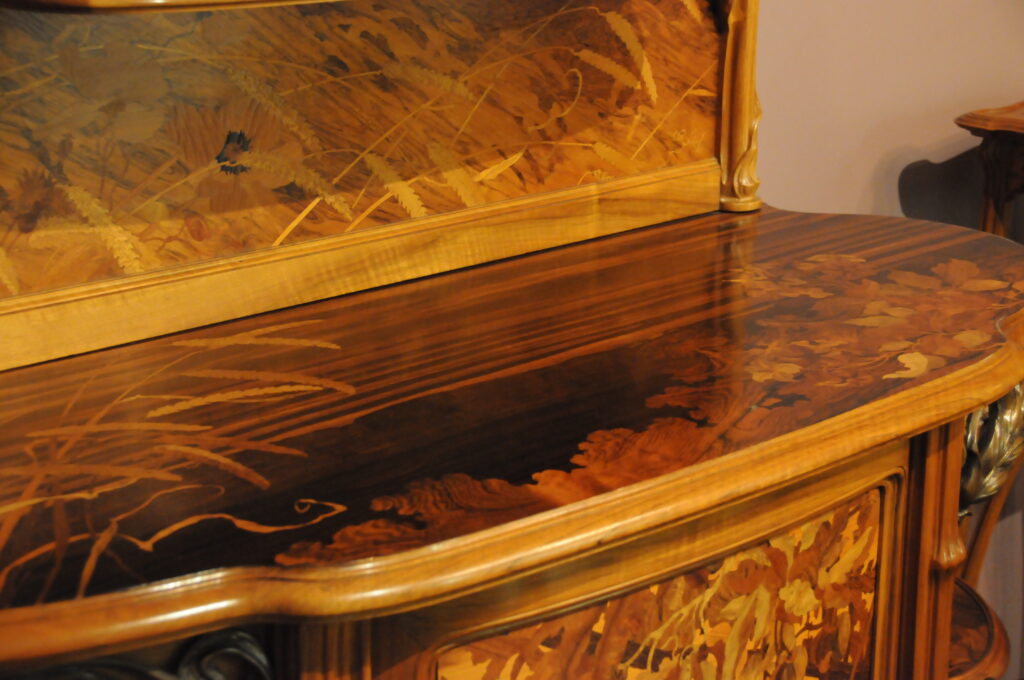
Around the corner from the Louvre is the Musee des Arts Decoratif, the decorative arts museum. It is a huge building hiding in plain sight with a modest entry off Rue des Rivoli. It has the largest collection in Europe, so it takes a while to find and look at what you are looking for. If you are easily distracted, you may not even get to it – there is so much to see. The Louvre has an extensive collection of items from the eras it focuses on, but the MAD has a broader remit. There are pieces from all over Europe, so the development of marquetry techniques and styles is visible. Early Dutch and German pieces flow into the later French items, which were often made by foreign artisans.


There is also a wonderful collection of Art Nouveau and Art Deco pieces. Paris was a center of both styles, and Art Nouveau pieces can be seen in every museum in Paris, but the collection here is top notch. There is also a whole room of Ruhlmann furniture lined up in rows. So long as you don’t touch them, you can get as close as you’d like, so detailed close up pictures are possible. There are also so some fascinating late Art Nouveau cabinets that contain Art Deco elements as the one style transitioned into the next. There are many other beautiful items there, such as a series of steel screens by Edgar Brandt, a superb metalworker.
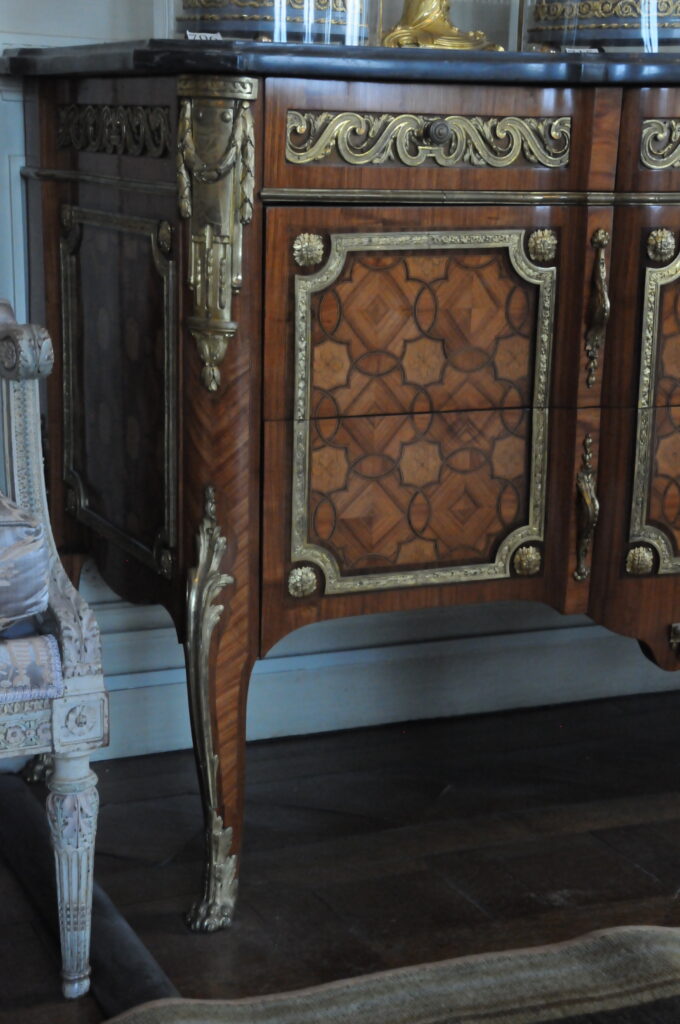
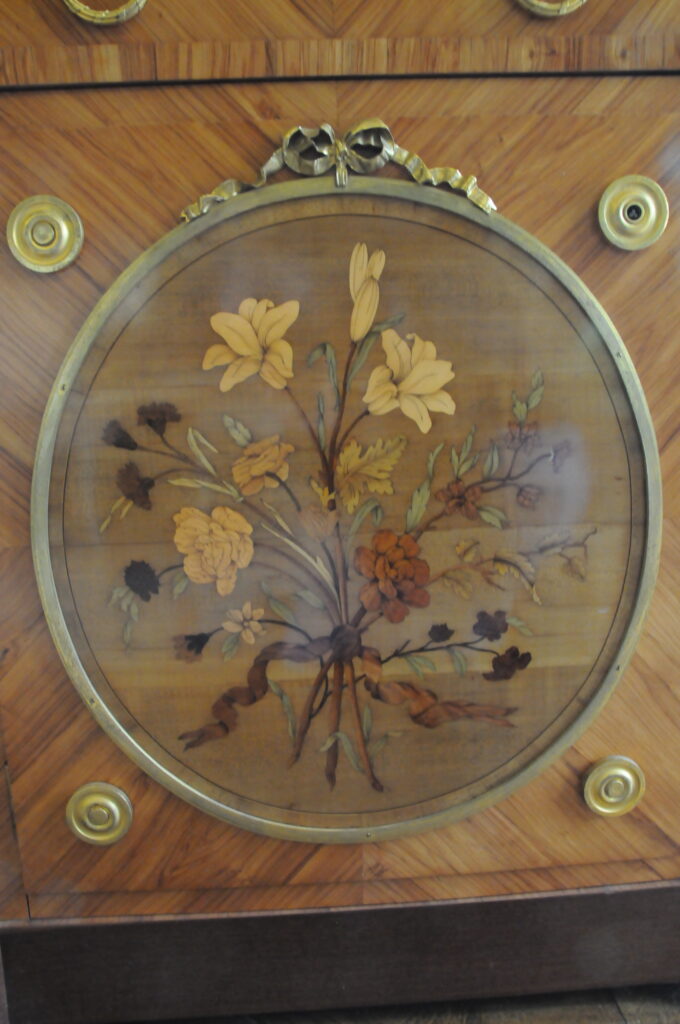
The Musee Nissim Camondo is much smaller than the previous two, and is focused on the decorative arts in the French royal court from 1750 to 1790. It contains many of the best pieces of the period, other than those at the Louvre.
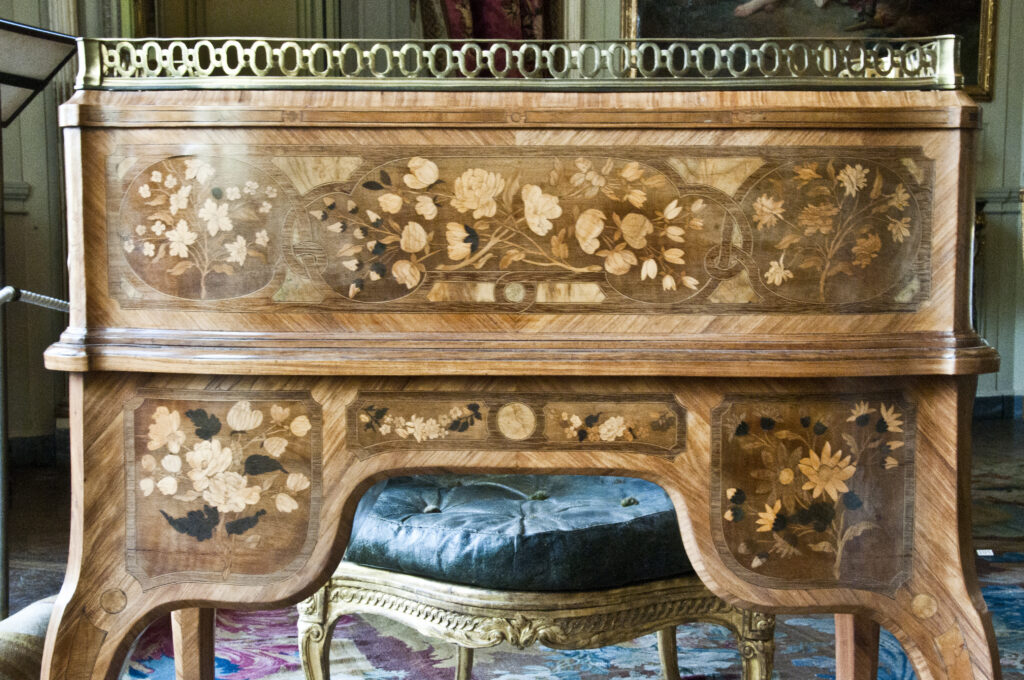
The collection of Oeben, Roentgen, and Riesener pieces is substantial, including the wonderful desk made by Oeben in the 1750’s for the Queen. There is also silver, textiles, and art from the period, but I didn’t pay them much attention.
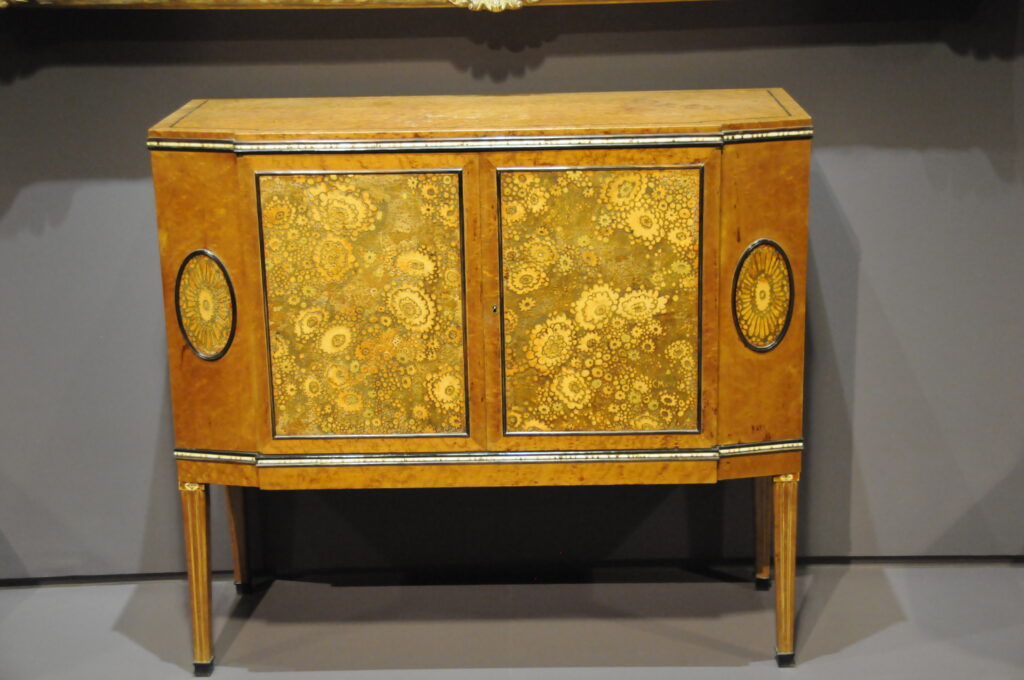
The fourth major furniture collection is at the Musee D’Orsay. It contains Arts and Crafts and Art Nouveau furniture from around Europe, which aligns with their overall collection focus of the late 19th century. The entry to the collection is tricky to find, but it is well worth the search. They had both room settings and individual pieces.

The Petit Palais, the Jacquemart, and the Arts et Metiers museums also had smaller collections of fine furniture, many with marquetry decoration.
Notice that I haven’t even mentioned Versailles, Fontainebleau, or Vaux le Vicomte, three magnificent nearby palaces which all have extensive original furniture collections. I haven’t been to any of those places since digital cameras, so I don’t have any pictures, and my memory is a bit foggy. Next time!
If you haven’t been to Paris to look at the furniture, you’ve missed out.
return to the running with chisels archive
return to top
©️ 2025 Heller & Heller Furniture | Privacy Policy | Terms